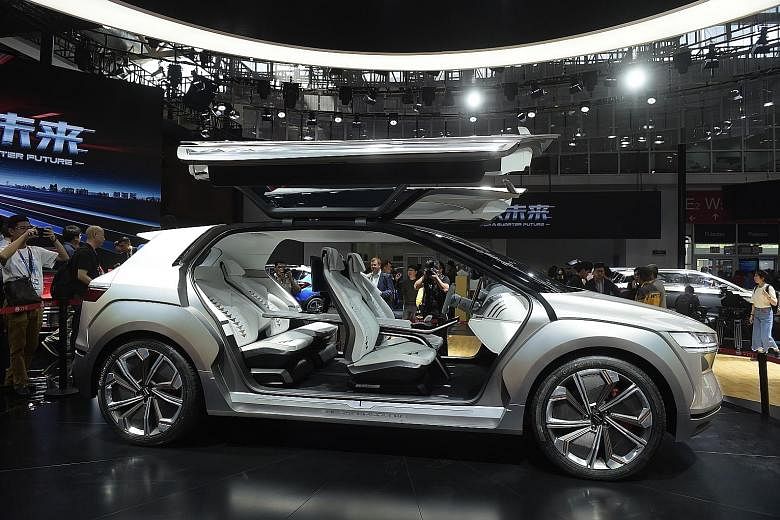DETROIT • The electric car is giving a lift to the lithium-ion battery - an energy source that has been around for three decades.
The electric-vehicle boom has already replaced gadgets such as laptops and smartphones as the world's biggest source of demand for such batteries.
Surging demand has created efficiencies of scale that have put a brake on prices.
Last year, the price of battery packs fell 24 per cent, according to Bloomberg New Energy Finance. These cost declines are driving the continued expansion of battery power.
Lithium-ion technology has begun popping up on electrical grids, scooters, ferries and planes - a proliferation that will only accelerate.
It has all happened rather fast. Electric vehicles accounted for virtually zero lithium-ion demand a decade ago, said Mr Christophe Pillot, a partner and director at Paris-based Avicenne Energy.
The batteries first began appearing in electric vehicles in 2006. But it took until 2014, when automobiles accounted for nearly 15,000 megawatt-hours, for vehicles to exceed a 25 per cent share of the world's lithium-ion supply, according to Avicenne data.
Between 2014 and last year, electric vehicles' use of lithium-ion more than quadrupled to over 71,000 megawatt-hours.
Electric vehicles reached 50 per cent of lithium-ion demand in 2016, although it inched past consumer electronics for the first time the year before, based on Avicenne data.
With electric-vehicle sales rising and demand for smartphones slowing, the gap will grow wider only.
Chemist M. Stanley Whittingham helped pioneer the rechargeable lithium-ion technology in the early 1970s while working for Exxon.
"The oil giant believed that in a few decades, most likely after the turn of the millennium, petroleum production would peak and that the time to diversify was now," wrote Seth Fletcher in a 2011 book, Bottled Lightning, about the birth of electric cars. At the time, lead acid-based rechargeable batteries were common.
Dr Whittingham, who teaches at the State University of New York at Binghamton, approached Exxon leaders for approval to proceed with battery research. "At the point, it was still conceptual. We had only built prototypes in the laboratory," he said.
In the 1980s, material scientist John Goodenough managed to increase the voltage and, therefore, the energy density. These efficiencies helped bring lithium-ion batteries into cellular phones of the early 1990s and then slowly into other consumer electronics.
Sales of battery-powered vehicles still account for only 1.2 per cent of auto sales worldwide. By 2025, however, pundits predict sales jumping almost 10-fold to about 11 million.
Some governments, mindful of climate change and carbon-dioxide emissions, are taking steps to boost demand. California wants five million electric vehicles on the road by 2030 and the state is essentially mandating that carmakers either sell electric vehicles or pay for zero-emission credits.
China wants seven million electric cars on the road by 2025.
But there could be setbacks on the way to even cheaper batteries. Anything that dampens the global spread of electric cars - falling oil prices, a shortage of charging infrastructure, or policy changes in Europe, China or the United States - could spell trouble.
Without a high volume of electric-vehicle sales, price forecasts for batteries may not be realised, said analyst Yayoi Sekine in New York.
But, for now, the champions for the batteries are charging ahead.
WASHINGTON POST

